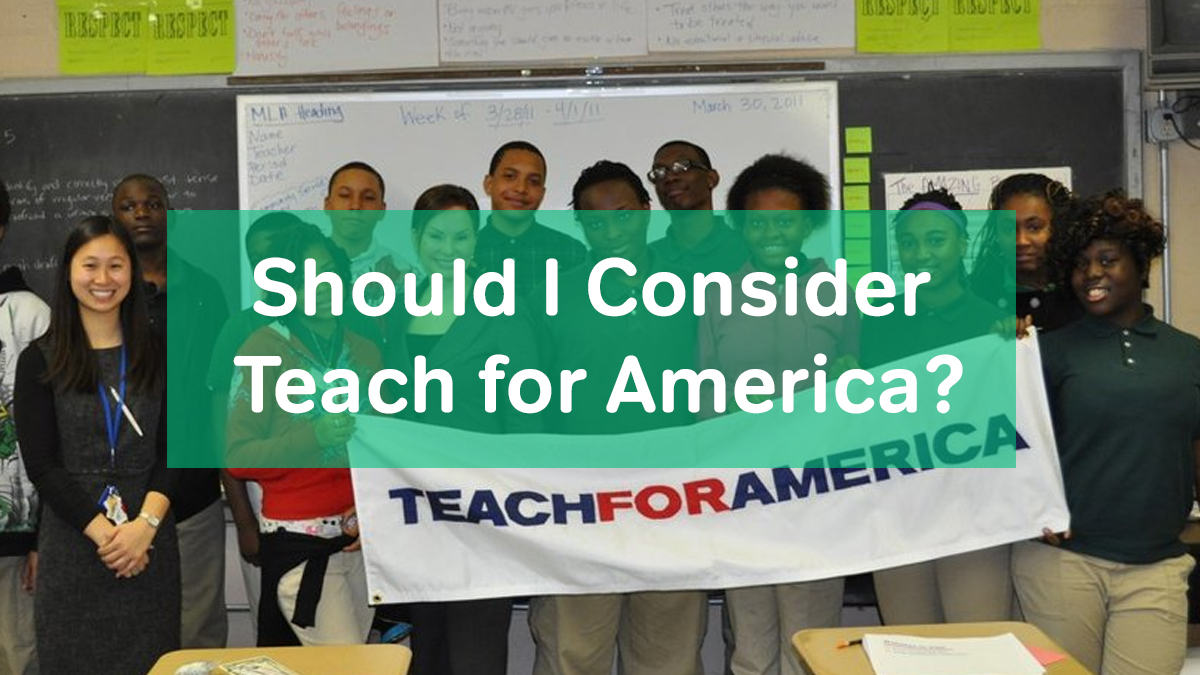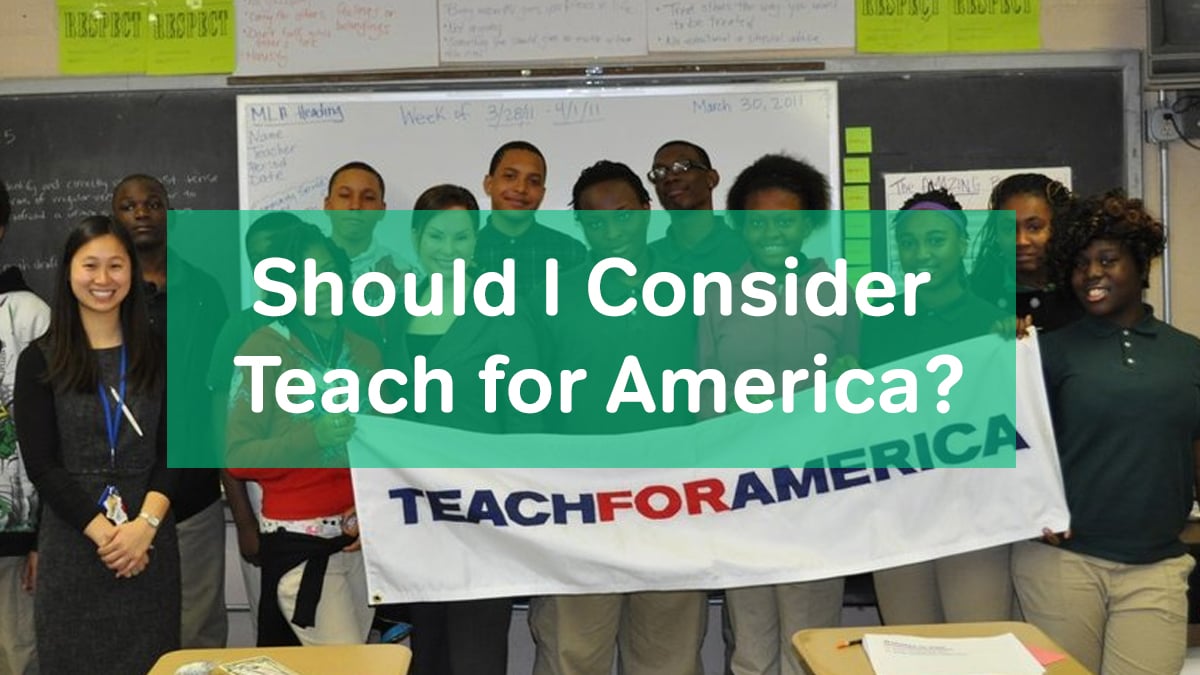
For the uninitiated, Teach for America is an alternative certification program that recruits people to become teachers in high needs schools for a commitment of two years. TFA is a fairly prestigious and selective program (for the past several years, fewer than 15% of applicants were admitted, a lower acceptance rate than that of Harvard Law School). It can be an incredible way to start teaching in a high needs school, but it’s also really hard, and not the right fit for everyone.

Full disclosure: I did Teach for America and taught in DC Public Schools as a corps member and alum from 2007-2012. I’ll be as impartial as I can, but take my opinion with a grain of salt!
What Does “Doing TFA” Involve?
Teach for America recruits (called “Corps Members”) commit to teach for a minimum of two years in schools in low-income areas. Once you’re accepted, you’re assigned to one of TFA’s 50+ regions, and you’ll interview with principals to find a job in a specific school before the school year starts.
TFA provides intensive training during the summer before you start teaching and ongoing support in the classroom during the two years of time in the corps. They also partner with local universities to help corps members become permanently certified teachers (usually by receiving a Masters in Education by the end of the two year commitment).
At the end of your two years in the corps, you will be a fully certified teacher. You will have a job in a public or public charter school, meaning that continuing to teach after your two-year commitment is easy to do. Many TFA corps members stay on for at least a third year at their placement schools, and about one third of the 42,000 alums are still teaching.
So, Should I Consider TFA?
If you want to be a teacher in a high-needs context or are passionate about educational equity, then I would say yes, you should definitely consider it. There are lots of benefits to doing Teach for America. The support the organization provides in the classroom is extremely helpful and very different from what most schools of education provide. If you are considering teaching in a school district that has high needs schools (which isn’t for everyone), then TFA can be a great way to establish a network and get high-quality professional development. The thousands of alums working in (and out) of education can help make finding roles later on in your career easier.
If you’re not an education major or currently pursuing a teaching credential, TFA can also be a good way to get one and get experience. And if you do have a teaching credential (or will by the time you join the corps), then TFA can still be for you. While most corps members didn’t major in education, some did. TFA can also be a great option for career changers who have some work experience but are looking to get into education.
Why Is Teach for America Controversial?
TFA does have some critics: Some criticize the brief training period, the relatively short two-year commitment, and the organization’s relationship with charter schools and the education reform movement. These all can be valid criticisms (well, the last one is only a criticism if you don’t like charters and the ed reform movement), but you have to decide whether they matter to you.
In addition to these controversial elements of TFA, doing the program does mean that you give up some of your options. While you do get to state preferences on the region of the country you’re placed in, TFA does not guarantee that you’ll get your top picks. (You do find out your assigned region before you decide to accept or decline your spot.) You also give up some of your options in selecting which school to work in. TFA only places teachers in high-needs schools–which may or may not be a good fit for you. But you likely won’t have many opportunities to shop around for the best school for you. Doing TFA means that, for at least the first two years of your career, you don’t really get to make many choices about where you work. So only you can decide if the benefits outweigh the downsides.
Summary
There are no shortage of opinions on Teach for America. Personally, I loved my experience and would recommend it to others provided they go into it with eyes wide open. Being a teacher is hard; being a teacher in a high-needs school is even harder. TFA’s highly compressed preparation isn’t for everyone, and the organization’s high expectations for its corps members may not be your cup of tea. But you also have the opportunity to do a tremendous amount of good and pursue a meaningful career. Get lots of opinions, talk to lots of people, and then make an informed decision.



